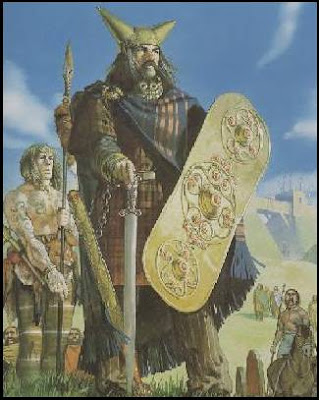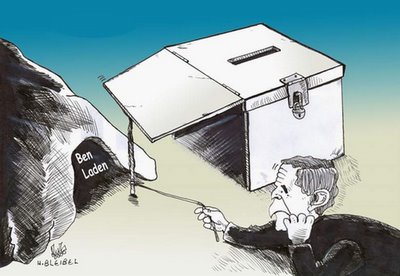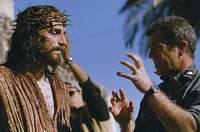
Important
Move pointer(LH button down) slowly OVER images for maximum effectiveness...Agendums may be codified for black-op pre-emptiveness..:-)..These pages carry "hidden messages"..When the pointer moves over an image it shows the hidden message which Mozilla does not do(blame W3C)...so there is an "add-on" for Firefox,Netscape 7 and Mozilla alternate image..Please go Here to download the open source add-on..It only takes a second and its well worth it

Ancient Kings of Britain...PART 1
September 12, 2009, 06:08:32 PM
See Here 
Roman Army in Britain.
by Alan Hassell
©opyright all rights reserved 1/2/2004 ©
Linkage..Images and image commententary...by Troedyrhiw
There is nothing more frustrating than picking up any historical book about Britain and reading nothing more than Roman crap and bullshit. When it comes to British history some have a great failing in as much as nothing happened before the Romans arrived. No one really lived here according to some historians and academics except a few tribes called Celts.
The thing is when it comes to British History, producer of a popular archaeological program knows absolutely nothing about British History or the Kings that Ruled the country long before the Romans came.Why is it that whenever they are on one of these digs and they come across an old church they automatically assumes that it is either Roman or Anglo Saxon?
On Sunday January the 25th 2004 they aired a program digging up skeletons.
Anglo Saxon women were noted as being small yet they came across a woman who at first they believed to be 6 foot tall and buried with a shield and a dagger.
Automatically they assume she was an Anglo Saxon, not even considering that she could have been British and was maybe part of the Boadacea rebellion. Did they do forensic tests on the actual bones they found? Maybe they didn’t even do a carbon 14 test to find out the age of the bones.I very much doubt it.
I cant say for sure myself, but Boadacea did poison herself or used an adder to strike the final blow after being defeated by the Romans in her last battle that almost destroyed the entire Roman army in Britain
Whist Boadacea and her followers might not have had the discipline and training of the Roman Army she was to become known as the first female freedom fighter.
The fact is no one has ever found her grave. The so called scientists don’t even know themselves without doing carbon 14 tests on the bones and taking DNA samples and testing them whether the body was British or Anglo Saxon.
Why oh why do they always jump to conclusions on wild assumptions without positive proof?
The way old Baldrick (Tony Robinson) carries on one would think he is the worlds leading authority on BULLDUST because that’s how it all comes across to me and as long as they are making money Who gives a toss anyway.
Although the production crew do attempt to project the digs they do honestly, when it comes to anything pre-roman they result to guesswork, which is not factual and in fact very damaging.
We are presented with the simple question as to why a two thousand year recorded history has been so pointedly ignored by modern scholars. Why is it that the history of Britain is an entirely blank page before the year 55 BC in any conventional modern history book when such an easily accessible and informative record is at hand?
Could it have anything to do with the fact that the Britons traced their ancestry in these pre-Christian records back to patriarchs that are known to us from the Genesis record but of whom the Britons should have known nothing in their pre-Christian culture if what the modernists have always told us was true?
Why is it that they fail to recognize the true Britain’s who lived here long before the Romans arrived were in fact practicing Christians that had there own churches and places of worship? They know that the British were here and were practicing Christianity, but will never admit it, why? They also are well aware that St. Augustine wasn’t the first person to start Christianity in Britain and Europe in AD 600.
 CLICK TO ENLARGE
CLICK TO ENLARGELets, go back in time a little and see if this makes sense the way it should be.
We know that Jesus was crucified on the cross. Mel Gibson, spent much of his own money creating a film about the last hours of Jesus. He goes onto show the brutality of how the Romans in their lust for blood put Jesus through excruciating pain and suffering before finally nailing him to the cross.
Continue Reading Here...
The Roman's in fact were a bunch of cruel tyrants, they put unarmed Christians into an arena to be eaten alive by lions. This spectacle was watched by the thousands that had gathered there to witness the brutality...Joseph claimed the body of Christ, seven hours later when he was presumed and declared dead.
The Roman’s let Joseph have the body for burial and then according to legend he buried his body in a cave..Three days after that the body of Jesus had disappeared into thin air.
Or had it? Maybe just maybe he wasn’t dead but badly injured and on the verge of dying when taken down from the cross. Then he was whisked away together with some of his disciples and followers and secreted to Britain of all places.
Now Joseph was none other than Joseph of Arimathea, a very rich merchant who dealt in metals amongst other things. He could bribe people to keep their mouths shut about certain things and Jesus and his companions out of the country would have been a difficult but not impossible task
Fortunately, Joseph had a really good ally on his side, one who had a lot of power and who was sympathetic towards him and his cause. This person was none other than King Caradoc, who’s daughter or wife Eurgain had attended one of the sermons Jesus gave.
Eurgaine daughter of Caradoc told her father of the wondrous things Jesus spoke about and was so impressed that she persuaded her father to give him and his follower’s shelter in a safe haven, Britain.
One of the very first churches is the famous Llandaff Cathedral situated in Wales. There are many others there too, like the Cor Emrys St. Peters church on Caer Caradoc in Wales. Glastonbury, was not the location of one of the first churches in Somerset. The true Glastonbury, is situated in the midlands owing to misunderstandings and misinterpretations of the old records. A more detailed account of this can be found in,The Holy Kingdom
Once they arrived in Britain, they immediately started to build churches and places of worship and so Christianity was born in Britain. This was over 500 years before St. Augustine had even thought about starting religion in Britain.
It is believed that the changeover to Christianity was compulsory and so was attendance to a church. So the stories perpetuated by the Anglo Saxons and their so called starting Christianity into Britain is a load of hogwash, bulldust and lies, the same lies and frogspawn that Time Team would like us all to believe when they make unsubstantiated claims about church ruins discovered on their so called digs.
Nennius tells us quite plainly that Christianity was introduced into Britain in AD 35 – 36. Why can’t that be accepted by these so-called academics? Do they not read Nennius or the Triads or is it beyond their comprehension. Yet here we have Academics, so called educated individuals denying that Christianity existed long before the Roman’s arrived. And you might wonder what they are teaching your children, that you are paying a high price for their education.
If you were a student? Would you want your child to be taught the truth or a pack of lies and bullshit? Well; that’s what they are being taught now, believe it or not. And if Tony Blair has anything to do with it students will be thousands of pounds in debt by the time they graduate and start paying the debt owed to the British Government for their so called Bullshit education.
Now, let us move on, We have all heard stories about Vortigren inviting the Anglo Saxon’s over to Britain to act as mercenaries to fight the pict’s and Scots who were causing problems north of the border.
Hengist and Horsa were granted lands by King Vortigren against the wishes of his fellow Britain’s. Once the fighting was over Vortigren had no need for the Anglo Saxons and war broke out. Eventually, there was a peace conference to be held. It was agreed by both parties that no weapons would be taken to the gathering. The Britain’s observed this like fools and went unarmed to their doom, for the despicable Saxons hid their long knives in their boots and once much ale had been drunk, on a given word the Saxons used the knives to kill 386 British Nobles who were present at the Peace conference. This event became known as the night of the long swords and was told to every new generation in Wales, where the incident occurred. ''Brad y Cyllyll Hirion'' ..."The Treachery of the Long Swords/Knives"]
There is a monument there, which has been allowed to go into ruin to hide this infamous event.
Did I say monument, hmmmm, sorry that monument happens to be an ordnance survey marker dumped directly over the burial mound by the Welsh Authorities in an attempt to hide and destroy one of Britain’s most infamous deeds perpetrated by the Anglo Saxons. To my way of thinking it offended someone in authority with English blood running through his veins that he felt insulted by the reminder and decided to eliminate it by desecration and
destruction. One thing the authorities cannot do is erase the memory of such an event and never will.
![Can you imagine this dubious quote coming from a PhD in the Historical Sciences..Sheesh...QUOTE ''This is a semi-mythical map, more or less connected to Vortigern, Hengist and Horsa. No political entities are shown, only wide-coloured areas. From the map, the reader IS LED TO BELIEVE[my emphasis]in the presence of three homogeneous and related groups called Saxons, Jutes, and Angles who fought against a fourth, unrelated group, called Britons''.''In fact, the 5th century was a period of semi-anarchy in the British Isles. Although our knowledge of the Anglo-Saxon settlements at THIS TIME IS POOR[my emphasis] and often legendary, it appears that the TRIBES[my emphasis] mentioned here were competing with each other and that they CHANGED ALLIANCES[my emphasis]changed alliances regardless of their group belonging.''END QUOTE](https://blogger.googleusercontent.com/img/b/R29vZ2xl/AVvXsEgUK6a8CPL_wX2lBkmakZl-9N5NBcAPjgVDrcw4ZVmkdI4eacUoZ7q4hPGrvjdG4BU1dRGY6agPlNaoU1FYCy_jQ4K-yhP52w3cz8WXKMqP8OUrAXWJgk772VpwsUxuDxVmES2y9w/s400/Vortigern,+Hengist+and+Horsa.jpg)
Vortigren only escaped with his life because he had married Rowena the daughter of Hengist although he was offered for ransom first. When this was refused they set him free. One person managed to escape and when Emrys Wledig (Ambrosias Aurelianus) learnt about the treachery he immediately returned from Brittany and gathered an army together and went in pursuit of Hengist and Horsa. Hengist was caught and killed; his brother Horsa and the rest of his band of butchers were spared and given land in Scotland.
When I went through school myself, I was taught that Caesar was the first Roman to conquer Britain such was the knowledge of my teachers. Teachers are only passing on the same old crap today, as they were when I was educated. Fortunately, I was taught to read and write and find out things for myself and make my own decisions about certain things.
If the truth were really known about Caesar, far from being the conquering hero that many considered him to be both his attempts in AD 55 and AD 54 to gain a stronghold in Britain were in fact miserable failures and total disasters.
Caesar had just conquered Gaul after a campaign that lasted about two years. Having achieved that quite successfully he then set his sites on Britain. Caesar was well aware of the mineral wealth of Britain in the form of metals such as tin, lead, copper, silver and gold. Then there was the produce which he considered to be worthy of adding to the Roman Empire’s wealth.
Alan Wilson told me that according to Welsh histories there was an exchange of letters between Caesar and the British King Cassivellaunus (leader of the Catevellauni) otherwise known as Caswallon who was a brother to King Llud. King Llud was the high king of the north Thames area of Britain. Caesar demanded that Caswallon submit Britain to Roman rule and also pay a tribute to prevent the spilling of blood.
Caswallon replied to Caesars letter stating that he was astonished by the Avarice of the Romans to even attempt to take Britain by force and should they be invaded the British would put up a fight till the death. Or words to that effect.
Caesar was under the impression the Britain’s knew nothing of war and the production of weapons and would be easy subjects to subdue. Caesar with the victory over the Gaul’s under his belt was eager for another great victory to impress the Senate once he returned to Rome.
Although, the British Kings often fought amongst themselves over territorial disputes when it came to battles with intruders such as Julius Caesar these tribes would unite and join forces exactly the same as they did during the Boadacea rebellion.

The main reason for this is because they all had one thing in common, their original birth right and heritage. They all originated from the same area and were known as the Kymry.
Once the kings or leaders of the various tribes were gathered to discuss how they would handle the situation they would elect a Pendragon or leader who would lead them into battle. The person selected was Cassivellaunus (Casswallon). King Arthur many years later would follow Caswallon’s example and do exactly the same by joining forces with other kings from their own kingdoms to stop the Anglo Saxons in several battles.
Caesar had sent one of his trusted officers, Caius Volusenus to scout the shoreline of Briton. He returned to Portus Itius (Boulogne) after five days of reconnoitering and then guided the Legions across the Channel to their landing sight.
So it appears that Caesar arrived off the south coast of Britain in ships with as many as 12,000 men in his army.
Caesars ships came unstuck with either the shallow water or low tides because he was unable top get his ships close to shore to unload his men. With his ships grounded, the Britons on horseback were able to pick off the Romans game enough to enter the water. Finally a standard bearer took the plunge and the legionnaires followed. Caesar is believed to have lost many men fighting his way off the beaches.
What Caesar hadn’t counted on was the fact that Caswallon was not only familiar with the modern tactics of Legionary warfare but had something the Roman’s never expected to see Chariots and Caswallon's guerrilla style of hit and run warfare.
The fighting that took place on the beaches was such that Caesar had to return to his ships twice and the spillage of blood on both sides was such that it stained the gray sea giving it a purple look.
Caesar writes, In chariot fighting the Britons begin by driving all over the field hurling javelins, and generally inspired by the horses and the noise of the wheels are sufficient to thrown their opponents ranks in disorder. Then after making their way between the squadrons of their own cavalry, they jump down from their chariots and engage on foot. In the meantime their charioteer retire a short distance from the battle and place the chariots in such position that their masters, if hard pressed by numbers, have every means to retreat to their own lines.
Why cant these so called historians and film researchers with all this information staring them in the face put two and two together are they incapable of thinking?
The British always favored hills and high places in which they preferred to do battle. Whilst it would be no effort for a horse to gallop up a hill at full speed, the roman foot soldier or infantry would find it hard going. One can imagine, guerrilla type attacks from hills hitting the rear and flanks of Caesars columns, throwing them into total disarray and reducing the Roman numbers considerably.
Once they broke off the engagement the Roman’s would follow then up the steep inclines exhausting themselves in the process. Once they reached a certain level Caswallon’s men watching and resting from the top of the hill would charge forward together with the chariots to further confuse the Romans, throwing them into retreat for fear the chariots would inflict serious injury to them.
Caesar was totally unprepared for this type of warfare and he glossed over events. He also lied about the way the Briton’s dressed comparing them to the Gaul’s who he described as being naked and painting their bodies in woad.
When it comes to matters regarding Caesar, it is far more reliable to turn to Strabo the Greek geographer who writes:
“He came not clad in skins like a Seythian, but with a bow in his hand, a quiver hanging on his shoulders, a plaid wrapped about his body, a gilded belt encircling his loins, and trousers reaching from the waist down to the soles of his feet. He was easy in his address; agreeable in his conversation; active in his dispatch, and secret in the management of great affairs; quick in judging of present accuracies; and ready to take part in any sudden emergency: provident
withal in guarding against futurity: diligent in the quest for wisdom: fond of friendship: trusting little to fortune, yet having the entire confidence of others, and trusted with everything for his prudence. He spoke Greek with a fluency, that you would have thought he had been bred up in the Lyceum, and conversed all his life in the Academy of Athens. "
Strabo, it appears gives a far more honest description of the British not only in their fashion of dress but also of their intelligence and prudence in all matters. Caesar had far more to lose than his credibility if the real truth about events were to be known in Rome. 
Important
REMINDER...Move pointer slowly OVER images for maximum effectiveness...Agendums may be codified for black-op pre-emptiveness..:-)..
Caswallon’s youngest brother, Nennius (Nynnyaw), fought hand to hand with Julius Caesar on the invasion of Britain in the year 55 BC. The Romans had been trying to set up camp in the Thames estuary when the Britons fell upon Caesar’s 10th Legion by surprise and attacked them. During the battle in which hand-to-hand fighting took place Caesar thrust his sword into the shield of Nennius who had attacked them and was unable to extract it. This was because some shields were made of numerous layers of hide that when stretched tight a weapon such as a sword might be able to penetrate it but extraction would prove to be very difficult.
Although other soldiers forced Nennius away from Caesar, he did manage to capture the emperor's sword. Nennius although wounded in the conflict managed to escape together with Caesar's sword but he died of his wounds fifteen days later and was buried beside the northern entrance to Trinovantum (modern Bishops gate in London?); some say that he was buried where the Tower of London now stands or Bryn Gwyn.Thus they combine the mobility of cavalry with the staying power of infantry: and by daily training and practice they attain such proficiency that even on a steep incline they are able to control the horses at full gallop, and to check and turn them at a moment. They can run along the chariot pole, stand on the yoke, and get back in the chariot as quick as lightning.
This tells us a lot about what Caswallon and the early Briton’s were capable of with their chariots. It also tells us the early Briton’s were able to throw Caesars well-trained infantry into complete and utter disarray once they bought the chariots into use. It must also be remembered, that many of those chariots had iron swords or other devices attached to the hub of the wheels.
Not only would the wheels inflict serious injuries to anyone hapless enough to come into contact with the wheels or swords but it would have had a terrifying effect on Caesars army once a few charges had been made between Caesars ranks. Not only were they confronting with a horse galloping at full speed but they also had to contend with getting out of the way of the weapons on the wheels or face serious injury if not death.
It is very strange that although mention is made in many documented accounts that British chariots did use such devices to inflict damage on the invaders, when they made the film about Boadacea, the producers of the film failed to show them in the film although they were shown and used in the film Ben Hur with the fantastic chariot race scenes.
Sounds like double standards were being used here to show the Briton’s in a poor light. The actual chariot replica made and used in the film is now on display at the British Museum.

It would also be wasteful to send out a chariot driven by one man with a solitary spear to throw at the enemy. Two maybe three people would have been on a chariot one or two archers and the driver. One only needs to look at murals from ancient Syria in the British Museum to realize that this is how they fought in battle with such weapons. This sword was considered a great trophy, and was paraded before large crowds and put on show for all to see in London after Caesars departure. If you look closely at the Coat of Arms of the City of London in the top left hand quadrant of the shield, Caesars sword is still there for all to see and is still being used as a form of insignia as it has right through the centuries.

The sword remained in Britain for many years, at one stage it was even thought to have been “Excalibur” the sword that King Arthur used. Eventually, it mysteriously disappeared never to be seen again.
There are numerous stories about the sword and one of them suggests that Constantine took possession of the sword and it was never seen again.
There were two kings who might have caused its loss. The first could have been King John who is supposed to have lost his whole treasure wagon in the notorious wash at King’s Lynn.
The Second could have been the Parliamentarians who sold off King Charles the First treasures to whoever was willing to pay the price after his execution. Much of his treasure was purchased by France and maybe still there. However, the sword recently turned up in America of all places. How it got there I’m not sure and not prepared to hazard a guess.
Alan Wilson and Baram Blackett have seen the sword in person. It was made with words built into it, which state,” whoever holds this sword commands the army.” Or words to that effect.
Apart from the shield part of the city of London’s coat of arms on the full coat of arms there are other more mysterious things that few people know about. For example situated either side of the shield are two dragons representing the associations with Pendragon and King Arthur.
 Directly above the shield we see King Arthur’s helmet, the cross in the middle of the shield is what is referred today as the cross of St. George. Even this is misunderstood for this is not the cross that Arthur is documented as having carried in some of his major battles and also when he donated land to Llandaff Charters?
Directly above the shield we see King Arthur’s helmet, the cross in the middle of the shield is what is referred today as the cross of St. George. Even this is misunderstood for this is not the cross that Arthur is documented as having carried in some of his major battles and also when he donated land to Llandaff Charters?
As the Romans advanced, farmers would move their cattle further away from the Roman forces and drove them into the forests where they couldn’t be seen. Caesars, supply lines at the rear were constantly being attacked depriving
Caesar and his men of much needed food and essential supplies.
Caesar, might have fought many battles and skirmishes along the River Thames and may even crossed over to the north side of it but he knew very little of the inhabitants or the real Briton’s.
A major battle took place at the Isle of Thorns which is approximately where the houses of parliament, Westminster are now. That was one on the few places that could be crossed as there was a ford there at one stage. Archaeologists tell us that there were fordable places Battersea too, which will be of special interest later.
Just by the houses of parliament there is a large statue of Boadacea on her chariot together with her daughters. It is a really remarkable statue. Now, try to imagine 4,000 or more of those things being lined up along the banks of the River Thames with Caesar and his 12,000 infantry pondering how they are going to overcome such a force?
Caesar writes: I noticed large enemy forces drawn up on the opposite bank. The bank had also been fortified with sharp stakes fixed along it, and, as I discovered from prisoners and deserters, similar stakes had been driven into the riverbed and were concealed beneath the water.
Cassivellaunus disbanded some of his forces, said to be in excess of 30,000, keeping some 4,000 charioteers with whom he kept a close watch on the line of March. He kept his men some distance from the main marching legionnaires and in doing so was able to follow the Roman advance. They concealed themselves in the woods and thickets, and when they discovered the areas through which we should be marching, they drove the inhabitants and their cattle out of the fields and into the woods. Then, whenever our cavalry had ventured any distance into the fields to get plunder or devastate the country, they sent these charioteers out of the woods by every road and track to attack them.
Notice the word road was used in this old document. The Roman’s were walking along British built roads and knew of their existence. Not all roads built in Britain were built by the Roman’s although later they might have added to what was already there and improved upon them. The British did have their own roads and they also had transport even if it was chariots.
Caesar’s men were in great danger from such clashes, and fear of them prevented them from ranging far a field. The result was that Caesar could not allow the cavalry to go any distance from the main column of infantry; thus the damage our cavalry could inflict on the Britons by burning and ravaging their land was limited by the capacity of our infantry, when they were tired from strenuous marching, to give them protection.
Caesar appears to know of only one ford, while archaeologist has located a number of possible fords: at Westminster, Battersea, and Vauxhall. This suggests that the Roman forces were deliberately fed disinformation in order to make them attempt their crossing at the most heavily defended point.
It also suggests that the boundary of the territory of Cassivellaunus (leader of the Catevellauni) was along the Thames.
What few people knew at the time was Cassivellaunus was the brother King Llud who had established Trinovantanium, which would have been clearly visible from the South bank of the River Thames. Strangely, there is no mention of it being seen despite being situated so close to the river.
However, a simple explanation is that as Trinovantanium was situated some distance to the east, Caesar and his forces might not have seen it as their journey would have been from southeast to northwest. One must also remember that the River Thames was much wider then than it is today.
Much of it would have been flood plain with tree’s either side of the River, which would have obscured the view of what was behind the trees. There were no tall buildings in those days in which anyone could get a birds eye view from the south bank of the River Thames as there are today.
A column especially when tired of marching pays little attention to what is ahead, they are more concerned about kicking the bloke in front of them should they break out of step as  sometimes happens in the military.
sometimes happens in the military.
The tactics that the British adopted appear to have inflicted real damage on the Romans, and reflect rather better on the British that classical sources normally suggest. Although the Romans may have been able to win one or two engagements at Cassivellaunus stronghold, the Romans left Britain, and did not return for 90 years.
The geographer Strabo states,”The deified Caesar crossed over twice to the island, but came back in haste, without accomplishing much or proceeding very far inland”. Caesar described the early Briton’s as being naked and using woad to dye their bodies blue. One wonders if Caesar actually came to Britain if he couldn’t describe the dress of the locals.
The Roman poet Lucan confirms the defeat and humiliation of the Romans; "In haste he turned and showed his back to the British he had attacked." Nennius on the other hand writes a more interesting story. 19. The Romans having obtained the dominion of the world, sent legates or deputies to the Britons to demand of them hostages and tribute, which they received from all other countries and islands; but they, fierce, disdainful, and haughty, treated the legation with contempt.
Then Julius Caesar, the first who had acquired absolute power at Rome, highly incensed against the Britons, sailed with sixty vessels to the mouth of the Thames, where they suffered shipwreck whilst he fought against Dolobellus, (the proconsul of the British king, and thus Julius Caesar returned home without victory, having had his soldiers slain, and his ships shattered.
In those days a battle would be fought during the day and they would collect their dead and![Click for larger pic...London was founded by Brutus of Troy .It was known as 'Caer Troia',(Welsh for City of Troy) and 'Troia Nova' (Latin for New Troy), which in time was corrupted to 'Trinovantum'. The Trinovantes were the Iron Age tribe who occupied this area of Britain....King Llud's two sons Afarwy (Androgeus), and Teneufan (Tenuantius), did not succeed him[that was Cassivelaunus-Caswallon) ..his brother] ...Trinovantum. Because of Llud's passion for his people the city became to be known as ''Kaerlud'', ('City of Lud' in Welsh.) Corrupted into 'Kaerlundein' until the Romans called it Londinium ... then ''London.''... After Llud's death his son Afarwy invited the Romans to Britannica (Not unlike Vortigen in Arthur's time)and for that is regarded in the Welsh Triads as one of the ''Three Dishonoured Men of Britain'..He was assassinated just after hearing the news of Julias Caesar's own death](https://blogger.googleusercontent.com/img/b/R29vZ2xl/AVvXsEicT2eoicIF4qWGNfQQiZ6QifBOnb-3ZmerS58IP2lLBblE7n9vbB1V1_iwwzFtT5LqF4DpW39WrQlO0Fesr-qDRiCaXiqveJN2uSz_YAsSmqkfQkEtbFTNazucAaG3GyLgWAMNGg/s400/Llud+and+two+sons.jpg) bury them during the night. It was more like something out of a Looney tunes cartoon where Wiley Coyote would clock on in the morning for his shift while Ralph the devoted watch dog would stand guard over the flock of sheep during the day only to clock off at night fall.
bury them during the night. It was more like something out of a Looney tunes cartoon where Wiley Coyote would clock on in the morning for his shift while Ralph the devoted watch dog would stand guard over the flock of sheep during the day only to clock off at night fall.
In Ludgate Circus there used to be a large statue of King Llud and his two sons. They are dressed and one of the sons, believed to be Tenuantius appears to be wearing body Armour as well. This statue alone proves that the British people were
not naked but dressed, highly intelligent well-educated individuals and well prepared for going into battle.
There is a better print of the statues at Guildhall, in that all three are shown wearing swords behind them. Which proves beyond doubt they were well armed and prepared for battle.
Caesar would have sent out scouting parties looking for other possible places upstream in which they might be able to cross the Thames. Once they were halfway across, the British would attack them at their most vulnerable point where they would be forced to retreat. There is no reason to suspect that he didn’t, because there is tangible evidence that he did.
Fortunately, the British Museum is the largest storehouse of treasures in Britain. Inside, there are number of iron age shields that have been recovered from the Thames together with many other objects such as axes, spears and daggers.
The Museum of London also has a huge collection of similar weapons, many recovered from the Thames. According to members of the staff at the museum state that, “many of these have been associated with votive offerings to the gods by the Celts.”
Votive offerings to the Gods, such is the education of the people that work in museums that they consider the British to be Celts. Have they learnt nothing, The Britain’s were derived from Brutas, they were descendants who originally occupied Britain from Troy. They were in  fact Trojans but were Christians as Nennius declares and writes about them converting to Christianity in AD 35 – 36. Even the Pope the highest religious person in the world recognizes that the British were the First Christians.
fact Trojans but were Christians as Nennius declares and writes about them converting to Christianity in AD 35 – 36. Even the Pope the highest religious person in the world recognizes that the British were the First Christians.
Weapons were highly sought after and highly prized items in those days. They were expensive items too and those that had them would not leave them out of their sight and would even sleep with them. The only time a warrior would give up his weapons was when he was injured or killed in Battle.
Looking at the intricate designs on the shields and similarities the designs it is quite conceivable that the markings could have been a form of insignia of certain tribes and rank of high standing individuals either way these shields look nothing like the easily recognizable shields the Romans used indicating that these shields were British.
Votive offerings to the gods is a feeble excuse to escape the real truth that a Battle had taken place. It was only when the fight was over that bodies would have been retrieved, but the weapons submerged in water and mud would remain there until such time as they were found again. .
Such is the case of the many weapons, shields, knives, spearheads, and axes have been found and are continually being found in the River Thames. The River is a well know haunt for treasure hunters, who call themselves mud larks. They obtain special permits from the Port of London Authority and continually search the River Thames in hope of finding such an item.
In fact anyone can apply for such a document, if they want to pay the price and fancy messing about getting filthy dirty in mud all weekend. It should be noted that the Port of London Authority, whilst allowing people to search the river banks put restrictions on any searching between Westminster and Battersea.

Now isn't this interesting? you are allowed to search other places along the Thames except the area's where the historians and archaeologists are aware that major conflicts between Caesar and Cassivellaunus along this stretch of the River and this is the area where all the shields, spears, swords and other weapons have been found.
This is typical of the Oxford Cambridge academics and their stupid way of thinking, in that nothing happened before the Roman’s arrived in Britain or before 1066. How dare they even consider the Briton’s welcomed Caesar with open arms and were going to allow him to take over without a fight.
Surely, someone at the museum has the sense to realize that swords and shields were highly prized items and the only time anyone would lose one would be in battle following a fight which resulted in death. This is how these shields and ther relics were lost and swallowed up by the fast flowing waters of the Thames remaining in the mud until they were discovered. The River Thames is sometimes described as holding the biggest collection of treasures anywhere in the world.
How many more of these wondrous objects of British history remain there in the river’s mud waiting to be unearthed and put on display for the public to see is unknown but there must be many. For it is written that thousands of Briton’s and Romans took part in this battle and many would have died in the fighting.
It is strange that whilst many British shields are displayed in the museums, there are not any roman ones? Is that because the Roman ones were made of wood, which floated away from the scene of any battle and eventually sank when the became water logged and rotted away? The leading question of course is why the absence of such items,when columns of Roman legionnaires are all depicted with shields and full body armour?
The answer to the problem is that only any metal objects such as the brass on the side and any other fillings would survive, It also shows that the Briton's were more advanced by using metal shields against the wooden ones used by the Romans.
But thin iron strips would rust away over the years or if they survived had become unrecognizable. However, when one considers the size of a Roman shield anyone finding strips of metal would fail to recognize what the objects were unless they were familiar with roman shields.ALAN HASSELL'S CONTINUANCE.... PART 2 (Copyrighted) ..HereNote
The above was written by Alan some years ago.. Go here
dated 11 March 2011 for an update as to why the Kymru(Welsh) battled with horse drawn chariots...Troedyrhiw
Troedyrhiw







































 Coliconducus the Conquerer
Coliconducus the Conquerer





 CLICK TO ENLARGE
CLICK TO ENLARGE![Can you imagine this dubious quote coming from a PhD in the Historical Sciences..Sheesh...QUOTE ''This is a semi-mythical map, more or less connected to Vortigern, Hengist and Horsa. No political entities are shown, only wide-coloured areas. From the map, the reader IS LED TO BELIEVE[my emphasis]in the presence of three homogeneous and related groups called Saxons, Jutes, and Angles who fought against a fourth, unrelated group, called Britons''.''In fact, the 5th century was a period of semi-anarchy in the British Isles. Although our knowledge of the Anglo-Saxon settlements at THIS TIME IS POOR[my emphasis] and often legendary, it appears that the TRIBES[my emphasis] mentioned here were competing with each other and that they CHANGED ALLIANCES[my emphasis]changed alliances regardless of their group belonging.''END QUOTE](https://blogger.googleusercontent.com/img/b/R29vZ2xl/AVvXsEgUK6a8CPL_wX2lBkmakZl-9N5NBcAPjgVDrcw4ZVmkdI4eacUoZ7q4hPGrvjdG4BU1dRGY6agPlNaoU1FYCy_jQ4K-yhP52w3cz8WXKMqP8OUrAXWJgk772VpwsUxuDxVmES2y9w/s400/Vortigern,+Hengist+and+Horsa.jpg)






![Click for larger pic...London was founded by Brutus of Troy .It was known as 'Caer Troia',(Welsh for City of Troy) and 'Troia Nova' (Latin for New Troy), which in time was corrupted to 'Trinovantum'. The Trinovantes were the Iron Age tribe who occupied this area of Britain....King Llud's two sons Afarwy (Androgeus), and Teneufan (Tenuantius), did not succeed him[that was Cassivelaunus-Caswallon) ..his brother] ...Trinovantum. Because of Llud's passion for his people the city became to be known as ''Kaerlud'', ('City of Lud' in Welsh.) Corrupted into 'Kaerlundein' until the Romans called it Londinium ... then ''London.''... After Llud's death his son Afarwy invited the Romans to Britannica (Not unlike Vortigen in Arthur's time)and for that is regarded in the Welsh Triads as one of the ''Three Dishonoured Men of Britain'..He was assassinated just after hearing the news of Julias Caesar's own death](https://blogger.googleusercontent.com/img/b/R29vZ2xl/AVvXsEicT2eoicIF4qWGNfQQiZ6QifBOnb-3ZmerS58IP2lLBblE7n9vbB1V1_iwwzFtT5LqF4DpW39WrQlO0Fesr-qDRiCaXiqveJN2uSz_YAsSmqkfQkEtbFTNazucAaG3GyLgWAMNGg/s400/Llud+and+two+sons.jpg)

